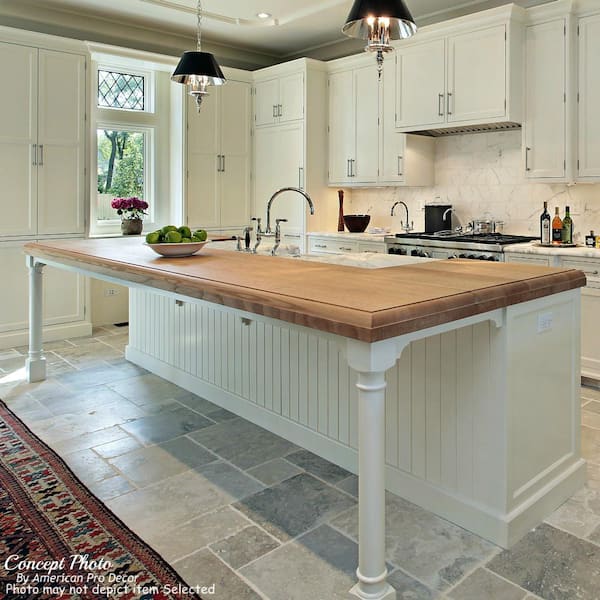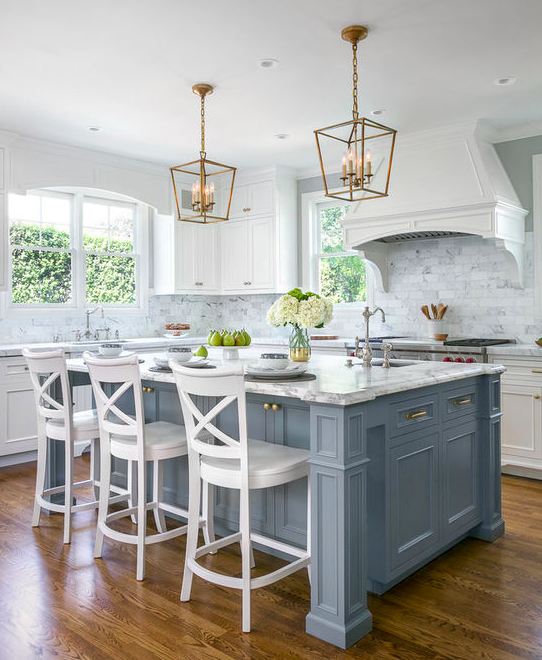Change Your Space with Cutting-edge Kitchen Island Leg Designs
The Importance of a Sturdy Kitchen Island Leg in Creating a Useful Food Preparation Area
A strong kitchen island leg serves as a fundamental element in developing a useful cooking atmosphere, supplying needed support for both the countertop and different cooking area activities. The stability it provides can significantly lower the danger of mishaps in high-traffic locations, while also contributing to the general aesthetic coherence of the room. As kitchens evolve right into multifunctional locations for cooking, eating, and interacting socially, the option of materials and layout considerations for island legs ends up being progressively important. Recognizing these elements can transform your kitchen into a much safer and more effective location, triggering further expedition into the most effective alternatives readily available.
Advantages of Sturdy Island Legs
Providing crucial support, durable kitchen area island legs play a pivotal duty in improving the performance and sturdiness of kitchen area islands - kitchen island leg. These legs not only birth the weight of the countertop and any additional things put on the island, but likewise add to the overall stability of the structure. A well-supported cooking area island makes certain that it remains upright and practical, also under hefty use, which is specifically vital in active cooking area settings
Moreover, tough island legs can enhance the aesthetic appeal of the kitchen. They provide a strong framework that can match various design styles, from modern-day to typical. This adaptability permits house owners to customize their kitchen area islands according to individual preference while ensuring that the structural stability continues to be uncompromised.
Along with their encouraging role, robust kitchen island legs can likewise enhance safety. A secure island reduces the danger of accidents triggered by tipping or wobbling, which is specifically vital in households with youngsters or senior people. Solid legs can assist in a seamless flow of tasks, allowing for efficient dish preparation and social interactions within the cooking area space. Eventually, purchasing durable kitchen island legs is essential for a functional and visually pleasing cooking area.
Products for Kitchen Area Island Legs
When picking products for cooking area island legs, longevity and visual allure are crucial elements to consider. One of the most common materials consist of hardwood, steel, and crafted timber, each offering one-of-a-kind advantages.
Hardwood, such as cherry, oak, or maple, is a traditional option because of its strength and ageless appeal (kitchen island leg). It can hold up against substantial weight and is resistant to put on, making it suitable for high-use kitchen area atmospheres. Furthermore, wood can be stained or painted to match different kitchen area designs
Steel legs, frequently crafted from stainless-steel or functioned iron, offer a commercial and modern-day appearance. They are incredibly solid and can support considerable tons while being immune to moisture and warm, which is helpful in a cooking area. Metal legs can also be quickly cleaned, enhancing their functionality.

Design Factors To Consider for Stability
The choice of materials for cooking area island legs straight affects the layout considerations for security. When making a kitchen island, it is paramount to examine the weight-bearing capacity of the picked materials. Much heavier products, such as strong wood or steel, generally supply greater security, especially under the anxiety of everyday usage.
In addition, the leg layout have to include proper geometry to boost stability. A wider base raises the assistance area, decreasing the threat of tottering or tipping. Factor to consider must also be provided to the height of the legs; disproportionate leg lengths can cause imbalance, jeopardizing the general stability of the island.
In addition, the distribution of weight across the island is important. Making sure that the leg placement straightens with the heaviest parts, such as kitchen counters and devices, will certainly better enhance security.
Upkeep Tips for Long Life

Cleansing is another critical facet of maintenance. Depending on the product of the legs-- whether wood, steel, or composite-- ideal cleansing methods need to be used. For wooden legs, a mild clean with a moist cloth and a suitable wood cleaner will certainly assist preserve their finish. Metal legs might require a light gloss to stop corrosion and keep their appeal.
If the kitchen area island experiences hefty use, consider strengthening the legs with added braces or supports to enhance toughness. By adhering to these maintenance pointers, property owners can guarantee their cooking area island legs stay practical and durable for years to come.
Picking the Right Leg Style
Normal upkeep makes sure that kitchen island legs stay useful and tough, however choosing the right leg design is just as vital for both visual appeals and support. The selection of leg design can significantly influence the total design and harmony of your cooking area.

Functionality is an additional important facet. For example, thicker legs or those with a sturdy base can sustain heavier kitchen counters and equipment, enhancing the island's energy. Conversely, slender legs may create a ventilated look, ideal for lighter designs yet potentially much less supportive.
Verdict
In summary, the visit our website importance of strong cooking area island legs can not be overstated in the creation of a useful content useful food preparation area. These legs give important support, enhance security, and add to the general aesthetic of the cooking area. By meticulously picking appropriate products and layouts, along with applying proper maintenance practices, the durability and performance of kitchen islands can be ensured. Ultimately, investing in durable island legs is essential to attaining a risk-free and effective culinary setting.
A sturdy kitchen island leg offers as an essential part in developing a practical cooking atmosphere, giving required assistance for both the countertop and various cooking area activities.Giving vital assistance, sturdy cooking area island legs play a crucial duty in improving the capability and longevity of kitchen islands. Inevitably, investing in tough kitchen island legs is crucial for a functional and aesthetically pleasing cooking location.
Factor to consider must additionally be provided to the height of the legs; out of proportion leg sizes can lead to discrepancy, endangering the total index stability of the island.
Wooden legs offer heat and a timeless appearance, while metal legs use a industrial and modern-day feeling.